Water damage is a serious threat to the safety and well-being of your property and its inhabitants. Unfortunately, the dangers associated with water damage are not always visible or apparent. In fact, there are many hidden risks that can cause significant damage to your home or business.
From mold growth to structural failures, water damage can have far-reaching consequences. It can cause property damage, health risks, and financial costs that can be difficult to bear. However, by taking proactive measures to prevent water damage, you can avoid these risks and protect your property and its occupants.
Signs of Water Damage
Water damage can take many forms, and the signs can be subtle or overt. Knowing what to look for can help you detect water damage early, before it causes significant harm to your home or office. Here are some common signs of water damage:
| Sign | Description |
|---|---|
| Discoloration | Water damage can cause walls, ceilings, and floors to change color, either due to stains or from a loss of paint and finish. |
| Musty odors | A damp, musty smell can indicate the presence of mold or mildew, which can grow and spread quickly if left unaddressed. |
| Mold growth | Mold thrives in damp, humid environments and can take hold within hours of water damage occurring. |
| Dampness or standing water | Water damage can often leave areas of your home or office feeling damp or wet to the touch, or cause standing water to accumulate in certain areas. |
It’s important to address signs of water damage promptly in order to prevent further structural damage and minimize health risks. Effects of water damage can range from minor, such as stained ceilings and walls, to more significant, such as compromised electrical systems and foundation damage.
If you suspect water damage, it’s best to enlist the help of a professional water damage restoration company to assess the situation and determine the best course of action.
Causes of Water Damage
Water damage can occur for various reasons, ranging from natural disasters to plumbing issues. In most cases, water damage is preventable, and taking proactive measures can help to minimize the risk of costly damage to your property. Below are some common causes of water damage:
| Cause | Description |
|---|---|
| Plumbing issues | Burst pipes, leaks, and overflowing toilets or sinks can cause significant water damage to your property. |
| Roof leaks | A leaky roof can allow water to seep into your property, causing extensive damage to walls, ceilings, and other structural components. |
| Natural disasters | Flooding, hurricanes, and severe storms can cause water damage to your property and pose a significant risk to your family’s safety. |
| Poor drainage | Insufficient drainage around your property can cause water to accumulate and seep into your basement or foundation, resulting in water damage. |
| Humidity and condensation | High humidity levels, condensation, and inadequate ventilation can cause moisture buildup and lead to water damage, mold growth, and other problems. |
Regular maintenance and inspections can help to identify potential issues before they cause extensive damage to your property. It’s also essential to have a plan in place for responding to water damage situations quickly and efficiently. By taking the necessary steps to prevent water damage, you can protect your family, your property, and your finances.
Effects of Water Damage on Property
Water damage can have serious consequences on the various components of a property. Depending on the severity of the damage, repairs can range from minor fixes to major renovations. Here are some effects of water damage on different parts of a property:
| Component | Effects of Water Damage |
|---|---|
| Walls | Water can cause paint to peel, plaster to bubble, and wallpaper to separate from the wall. If the walls have absorbed water, mold growth can occur, which can be difficult to remove. |
| Floors | Water can warp and buckle wood floors, destroy carpeting, and damage tile and linoleum. Subflooring can also be affected, which can lead to structural issues. |
| Ceilings | Water damage can cause ceilings to sag, warp, and even collapse. A weakened ceiling can be dangerous for anyone in the property. |
| Electrical systems | Water can damage electrical systems, leading to power outages, damage to appliances, and even electrical fires. |
It is important to address water damage promptly to prevent further damage and ensure the safety of those living or working in the affected property. Restoration professionals use specialized equipment to dry out affected areas, identify hidden damage, and repair and replace damaged components that may cause problems in the future.
Effects of Water Damage on Health
Water damage not only affects the structural integrity of a property but can also have serious health implications for its inhabitants. Here are some of the potential health risks associated with water damage:
| Health Risk | Description |
|---|---|
| Respiratory problems | Exposure to mold and other airborne contaminants can cause respiratory problems, including coughing, wheezing, and asthma attacks. |
| Allergies | Water damage can trigger allergies, leading to symptoms such as sneezing, runny nose, and itchy eyes. |
| Infections | Bacteria and other microorganisms can thrive in damp environments, leading to infections of the skin, eyes, ears, and respiratory system. |
If you suspect that your property has water damage, it is important to take action immediately to prevent these health risks from developing. The longer water damage is left untreated, the more likely it is that mold and other contaminants will grow and spread.
Water Damage Insurance
Water damage can be costly to repair, which is why having adequate insurance coverage is important. There are different types of insurance policies available, so it’s essential to choose the right one for your needs.
Flood Insurance
Standard homeowners’ insurance policies typically do not cover flood damage. Therefore, it’s crucial to purchase a separate flood insurance policy if you live in an area prone to flooding.
Water Damage Insurance
Water damage insurance can cover damage caused by burst pipes, leaks, and other plumbing issues. However, it’s important to review your policy carefully to ensure it covers the types of water damage you’re most likely to experience.
Getting Coverage
When purchasing insurance coverage for water damage, you should consider the level of coverage you need, the cost of the policy, and the deductible you will be required to pay in the event of a claim. It’s also important to review the specific terms and conditions of the policy before purchasing it.
If you experience water damage, you will need to file an insurance claim promptly. Your insurance company will send an adjuster to assess the damage and determine the amount of compensation you’re entitled to. Make sure to document all the damage and keep all receipts and invoices from repairs.
Water Damage Cleanup
In the event of minor water damage incidents, homeowners may be able to clean up the mess themselves. However, for more extensive damage, it’s important to call in a professional water damage restoration company. Here are some tips on how to handle water damage cleanup:
- Wear protective gear, including gloves, masks, and goggles, to avoid exposure to contaminants.
- Turn off the power supply before entering the affected area.
- Remove any standing water using a wet vacuum or pump.
- Open windows and doors to improve ventilation and allow the area to dry out.
- Use fans and dehumidifiers to speed up the drying process.
- Use appropriate cleaning solutions, such as bleach, to disinfect surfaces.
- Dispose of any damaged or contaminated items properly.
If the damage is extensive or if there is any suspicion of mold or other contaminants, it’s best to call a professional water damage restoration company. These experts can thoroughly assess the damage, identify any hidden dangers, and carry out the necessary repairs and cleanup to ensure the property is safe and habitable once again.
Water Damage Prevention
Prevention is key when it comes to water damage. Here are some practical steps you can take to prevent water damage from occurring in your home:
- Regular maintenance and inspections of plumbing systems and appliances can help identify potential issues before they turn into major problems.
- Sealing all cracks and gaps in your home’s exterior can prevent water from seeping inside.
- Ensure proper drainage by keeping gutters clean and maintaining the slope of your yard away from the foundation of your home.
- Take precautions during extreme weather conditions, such as heavy rain or snow, by ensuring your roof is in good condition and your basement is adequately waterproofed.
- Consider installing water detection devices that can alert you to leaks or water buildup, allowing you to take quick action to prevent damage.
Don’t wait until it’s too late to take action. Proactive prevention is always better than reactive repairs when it comes to water damage.
Choosing a Water Damage Restoration Company
When faced with water damage, it’s crucial to choose a reputable and experienced restoration company. But with so many options available, how do you know which one to choose? Follow these guidelines to help you make an informed decision:
- Check for licenses and insurance coverage: Make sure the restoration company is licensed and insured to do business in your area. This will protect you from liability in case of any accidents that might occur during the restoration process.
- Look for experience: Choose a company that has experience handling your specific type of water damage. For example, if you’ve experienced flooding, look for a company that specializes in flood damage restoration.
- Check references: Ask the company for references from previous clients. Contact these references and ask about their experience with the restoration company.
- Check for certifications: Look for a company that is certified by industry organizations such as the Institute of Inspection Cleaning and Restoration Certification (IICRC).
- Consider responsiveness: Choose a company that responds promptly to your calls and emails. This demonstrates their commitment to customer service and prompt resolution of your water damage issue.
- Ask about their restoration process: Choose a company that follows a professional and organized restoration process. They should be able to explain their process clearly and provide a timeline for completion of the work.
By following these guidelines, you can choose a water damage restoration company that will provide you with professional and effective services. Remember, choosing the right company can make all the difference in the restoration of your property and minimizing your losses.
FAQ: Frequently Asked Questions about Hidden Dangers of Water Damage
Q: How quickly should I act if I suspect water damage in my home or business?
A: It’s critical to take action as soon as possible to prevent further damage and potential health risks. The longer water damage goes untreated, the more extensive and costly the repairs will become. Contact a professional water damage restoration company immediately to assess the situation and begin the cleanup and repair process.
Q: Can I clean up water damage myself?
A: For minor incidents, such as small leaks, you can attempt to clean up the water damage yourself. However, it’s important to wear protective gear and use appropriate cleaning solutions to avoid exacerbating health risks. For extensive damage, it’s best to hire a professional restoration company to ensure the job is done safely and effectively.
Q: How can I prevent water damage in my home or business?
A: Regular maintenance and inspections are key to preventing water damage. Seal any cracks or gaps in your property’s foundation and ensure proper drainage. In addition, make sure to check for leaks or other issues in your plumbing and roofing systems. Remember, proactive prevention is always better than reactive repairs.
Additional Resources:
If you’re interested in learning more about preventing and addressing water damage, check out the following resources:
– The Environmental Protection Agency’s guide to mold: https://www.epa.gov/mold/brief-guide-mold-moisture-and-your-home
– The National Flood Insurance Program’s website: https://www.floodsmart.gov/
– The Institute of Inspection, Cleaning and Restoration Certification’s directory of certified restoration professionals: https://www.iicrc.org/page/IICRCGlobalLocator









